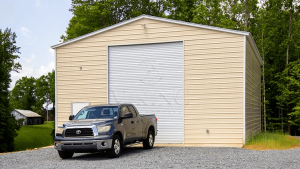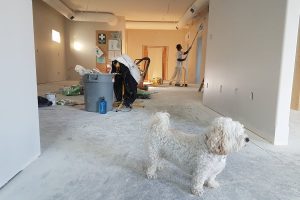How Much does Garage Door Insulation help?

There are two types of the garage to consider, the attached garages that share a wall with the house, and a standalone garage that is essentially a building all unto itself.
Insulating both will provide different results, where attached garages when insulated reduce the overall costs of heating and cooling, and in some instances can add a few more feet of living space too. A stand-alone garage when insulated can be more than a garage, and can be converted into an office, a work space, a play room, a living quarter, or be an insulated garage protecting your vehicle from extreme conditions.
Attached Garages
An attached garage shares a wall and a door with the house, as such, an insulated garage, especially one with an insulated garage door will provide extra protection from heat loss or gain to the house along the shared wall and door.
A garage is usually constructed out of the flimsiest of materials, where the roof is thin and uninsulated, only protecting the space from the rain and other elements. The entire wall sized door is also just a thin piece of metal that rises and shuts by a mechanism, (unless you have a wood door).
The floor is usually untreated concrete, so you are getting all three forms of heat loss, convection, conduction, and radiation hitting the garage from all sides.
When you insulate the garage, there are varying degrees from basic garage door insulation that raise the internal temperatures by 12 degrees Fahrenheit on cold days, and reduce the heat on hot days by 5-6 degrees. These might seem negligible numbers, but when you combine this with an insulated roof, you end up gaining even more insulation results, essentially converting your attached garage space into a hospitable area that can be used for safe storage, as workroom for DIY and even as a living space.
Stand-Alone Garages
A stand-alone garage is quite a boon, since they are usually slightly larger than attached garages and do not affect the house. As such, a stand-alone garage should be insulated to protect the vehicles you park there from extreme cold or heat. Either extreme affects the battery life or the transmission fluids, so insulating your garage will prolong your vehicles life expectancy and save you money too.
Another use for the stand-alone garage is converting it into another room, this could be an office, a rec room, a playroom for children, a storage facility, a gym or a fully equipped workshop. Whatever the reason, insulating the garage door as well as the rest of the garage, including the roof, walls and floor, will deliver a much more useful space that can be used for more than parking a car.
Costs
In terms of cost, when factoring in the results, a basic garage door insulation job, even the simplest of DIY kits, not cost you more than what you will save in the first year, and it only takes an hour to complete. The actual costs is ridiculous when you factor in the hospitability of the garage after you convert it fully with roof, door and wall insulation solutions.
Conclusions
According to MechanicGuides, Insulating a garage door helps a lot, in fact it converts a generally inhospitable place into a living space that can be converted for many different purposes. Apart from converting it for more comfortable use, an insulated garage door will lower heating costs in the winter, with less heat loss through the joint wall and reduce air-conditioner costs in the summer, where the internal temperature is maintained at a more convenient temperature.






